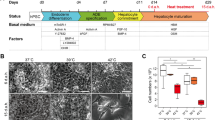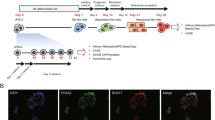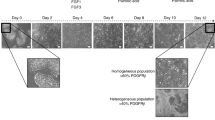Abstract
Human embryonic stem cells (hESCs) are a valuable source of pluripotential primary cells. However, their homogeneous cellular differentiation to specific cell types in vitro has proven difficult thus far. Wnt signalling has been shown to play important roles in coordinating development and we demonstrate that Wnt3a is differentially expressed at critical stages of human liver development in vivo. The essential role of Wnt3a in hepatocyte differentiation from hESCs is paralleled by our in vitro model, demonstrating the importance of a physiological approach to cellular differentiation. Our studies provide compelling evidence that Wnt3a signaling is important for coordinated hepato-cellular function in vitro and in vivo. In addition, we demonstrate Wnt3a facilitates clonal plating of hESCs capable of hepatic endoderm differentiation. These studies represent an important step forward toward the use of hESC-derived hepatocytes in biomedical applications and has opened the door to high through-put metabolic analysis of human liver function.
Similar content being viewed by others
Article PDF
Author information
Authors and Affiliations
Corresponding author
Rights and permissions
About this article
Cite this article
Hay, D., Fletcher, J., Payne, C. et al. Modelling Hepatic Endoderm Development: Highly Efficient Differentiation of Human Embryonic Stem Cells to Functional Hepatic Endoderm Requires ActivinA and Wnt3a Signalling.. Nat Prec (2007). https://doi.org/10.1038/npre.2007.1454.1
Received:
Accepted:
Published:
DOI: https://doi.org/10.1038/npre.2007.1454.1



